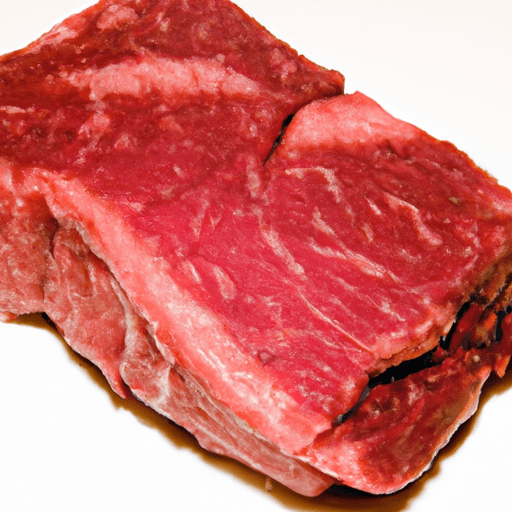The Delectable World of Cube Steaks
Cube steaks are a versatile and flavorful cut of meat that have been a staple in home kitchens and diners for generations. Derived from various cuts of beef, cube steaks are known for their tender texture and succulent taste, making them a popular choice for a range of delicious dishes. So, let’s dive into the world of cube steaks and explore their culinary wonders!
Taste and Texture
Cube steaks are renowned for their exquisite taste and hearty flavor. They offer a rich, beefy essence that has made them a classic choice in comfort food recipes. With a tender texture that is easy to bite into, cube steaks become even more tender and juicy when properly cooked. This makes them ideal for recipes that require meat to be fork-tender and packed with savory goodness.
Common Uses in Cooking
Cube steaks are incredibly versatile and can be used in a variety of tasty dishes. One popular way to cook cube steaks is by breading and frying them to make the beloved country-fried steak. This dish combines the tenderness of the steak with a crisp, golden crust, creating a delightful contrast of textures.
Another delicious option is to tenderize the cube steaks and add them to stews or slow-cooked dishes. The long cooking time allows the meat to become fork-tender and infuse the dish with its robust flavor, resulting in a satisfying meal.
Cube steaks can also be grilled, broiled, or pan-seared to create mouthwatering steak sandwiches or served alongside roasted vegetables for a hearty dinner. The options are endless, and your culinary creativity can truly shine when working with this remarkable cut of meat.
Nutritional Value
While cube steaks certainly offer a delightful taste, they also have nutritional benefits worth noting. As a lean cut of beef, cube steaks provide a decent amount of protein while being relatively low in fat. They are also a good source of essential vitamins and minerals such as iron and zinc, supporting your overall well-being.
However, it’s important to keep portion sizes in mind, as cube steaks can become calorie-dense when cooked in oil or accompanied by heavy sauces. But with mindful preparation and portion control, cube steaks can be a healthy addition to your balanced diet.
A Brief History and Fun Facts
The origins of cube steaks can be traced back to the United States, where they gained popularity in the mid-20th century. Initially, cube steaks were created as a solution for utilizing tougher cuts of meat. The meat was mechanically tenderized using a meat tenderizer tool, resulting in the signature “cubed” appearance and enhanced tenderness. This method allowed the less expensive cuts of beef to be transformed into a delectable dining experience.
Interestingly, cube steaks are not limited to beef alone. In some cuisines, such as chicken-fried steak and Wiener schnitzel, cube steaks made from veal or pork are equally cherished.
Now It’s Time to Savor Cube Steaks!
With their tender texture, delightful taste, and versatility in recipes, cube steaks hold a cherished place in the culinary world. Whether prepared in a traditional country-fried style or incorporated into a comforting stew, these flavorful cuts of meat never fail to delight the senses. So, why not embark on a culinary adventure and embrace the delectable world of cube steaks? Your taste buds will thank you!
Remember to experiment with various seasonings, cooking methods, and complementary ingredients to unleash the full potential of these magnificent cuts. There’s a world of culinary exploration waiting for you with each succulent cube steak you savor. Enjoy the journey!
Origin: Cube steak, also known as minute steak, is a cut of beef that has been tenderized by pounding with a meat tenderizer or mechanical cubing machine. It is commonly made from the top or bottom round, although other cuts such as chuck or sirloin can also be used.
Common Uses: Cube steak is a popular choice for various recipes due to its tender texture. It is often breaded and fried, and commonly used in dishes like country-fried steak, Swiss steak, or chicken-fried steak. It can also be used in stews or braised for added flavor.
Nutritional Benefits: Cube steak is a good source of protein and essential nutrients. A 3-ounce (85g) serving of cube steak typically contains about 180-240 calories, 20-30 grams of protein, and varying amounts of fat depending on the cut of beef used.
Unique Properties: The unique feature of cube steak is its tenderized texture, achieved through the mechanical cubing process. The pounding or cubing breaks down the tough muscle fibers, making it easier to chew and digest. This preparation method also allows the meat to absorb flavors more easily.
Historical Significance: The origins of cube steak can be traced back to early butchery techniques. Before mechanical cubing machines were available, butchers would manually tenderize tough cuts of meat by pounding them with a meat mallet or rolling pin. This traditional method of tenderizing meat has been used for centuries to make tough cuts more palatable and enjoyable.




Use the share button below if you liked it.
It makes me smile, when I see it.